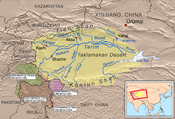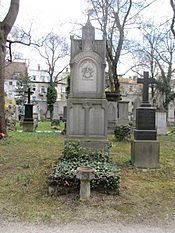Adolf Schlagintweit facts for kids
Adolf von Schlagintweit (9 January 1829 – 26 August 1857) was a German botanist and explorer of Central Asia. Brothers Hermann, Adolf and Robert Schlagintweit were commissioned by the British East India Company to study the earth's magnetic field in South and Central Asia. They were the first Europeans to cross the Kunlun mountains and the first to explore the region between Karakoram and Kunlun. After their joint exploration, Adolf Schlagintweit made a separate expedition of his own, crossing the present day disputed Aksai Chin region for the first time. Mistaken for a Chinese spy, he was executed in Kashgar.
The standard author abbreviation A.Schlag. is used to indicate this individual as the author when citing a botanical name.
Life

The second of five brothers in Munich, Adolf, with his brother Hermann, published a scientific study of the Alps in 1846–1848. They established their reputation with the Untersuchungen über die physikalische Geographie der Alpen (1850), and were afterwards joined by their brother Robert; the three jointly published Neue Untersuchungen über die physikalische Geographie und Geologie der Alpen in 1854.
In 1854, acting on the recommendation of Alexander von Humboldt, the East India Company commissioned Hermann, Adolf, and Robert to make scientific investigations in their territory and particularly to study the Earth's magnetic field. For the next three years, they travelled through the Deccan, then up into the Himalayas, Karakoram, and Kunlun mountains.
While Hermann and Robert returned from their travels in early 1857, Adolf went back for further exploration on his own. He followed a new, heretofore unknown road via the Chang Chenmo Valley, Lingzi Tang Plains and the Aksai Chin. He gave the name "Great Aksai Chin" to this region, and followed the Karakash River valley to Turkestan. Suspected of being a Chinese spy, and without benefit of a trial, he was executed in Kashgar by Wali Khan, the emir of Kashgar in August.
In 2017 Lahore Museum Pakistan found 50 masks that Schlangintweits brothers made during their Indian research visit in 1854-58. These ethnographic masks of various Indian communities shed light on Indian ethnic diversity.
See also
 In Spanish: Adolf von Schlagintweit para niños
In Spanish: Adolf von Schlagintweit para niños



